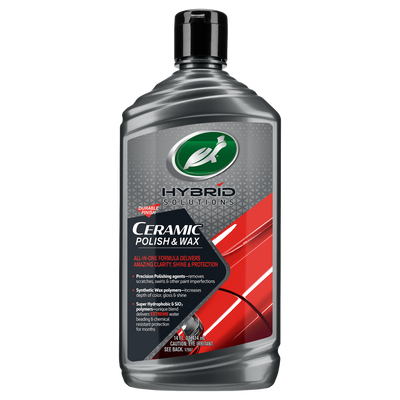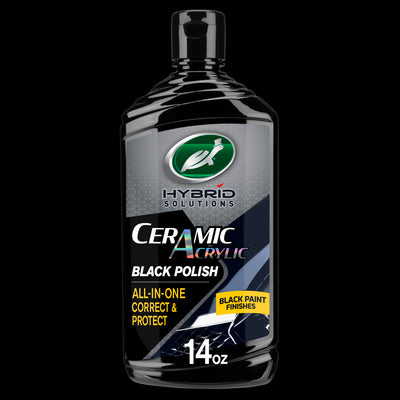
FREE DELIVERY ON ORDERS OVER $15
THOUSANDS OF 5-STAR REVIEWS
15% Off Sitewide with code Halloween24
-
Exterior
- Interior
-
Hybrid Solutions
Featured
- MISTER CARTOON
-
Kits
Featured
- Accessories
- Learn
- Rewards
-
Product Finder
What Are You Working On Today?
- Home
-
Exterior
-
Wash
- waterless
- wash & wax one steps
- extreme foam
- heavy duty cleaners
- ph neutral car wash
- exterior car glass cleaner spray
- View all Wash
- Wax, Seal & Coat
- Paint Correct
-
Restore
- headlight restoration
- restore scratch repair
- trim restoration
- bug & tar
- metal & chrome finish
- View all Restore
- Wheel & Tire
- View all Exterior
-
Wash
-
Interior
- Cleaners
- Carpet, Mats & Upholstery
-
Leather Care
- leather cleaner & conditioner
- best car interior cleaning products for leather-vinyl-rubber
- View all Leather Care
- Odor Elimination
- View all Interior
-
Hybrid Solutions
- Buy 1 Get 1 Free
- New
- Best Sellers
- Ceramic
- Graphene
- Interior
- Hybrid Solutions Pro
- View all Hybrid Solutions
-
Mister Cartoon
- Mister Cartoon Air Care & Foggers
- Mister Cartoon Wash, Wax & Detailer
- Mister Cartoon Interior, LVP & Protectant
- Mister Cartoon Wheel & Tire
- View all Mister Cartoon
-
Car Care Kits
- New
- Best Sellers
- Vehicle Detailing Kits
- Exterior Kits
- Interior Kits
- Hybrid Solutions Kits
- View all Car Care Kits
-
Accessories
- New
- Best Sellers
- Wax application
- Exterior Accessories
- Interior Accessories
- Buckets
- Cutting Pads
- Towels
- Sponges & Mitts
- Apparel
- View all Accessories
- Rewards
- Learn
- Product Finder
FREE DELIVERY ON ORDERS OVER $15
THOUSANDS OF 5-STAR REVIEWS
15% Off Sitewide with code Halloween24

What shop lights work for professional car detailing?
In this article, you will learn:
- Why proper lighting is important during the paint correction process
- How professionals light their workspaces for car detailing services
- How car owners can approximate pro-style lighting in their home garages
For your car or truck, a bright and sunny day can be your best friend or your worst enemy. If your car is scratch-free, washed and waxed, that bright light will make your car sparkle like crazy. But, if you have scratches or swirls in your clear coat, the sunlight will emphasize every little imperfection. The bright side is you can use this intense lighting to your advantage when detailing your car. And this is precisely why professional detail shops light up their workspaces with super bright shop lights. Regular, interior light just won't recreate the actual light conditions your car will face when it's outside. And let's face it -how it looks outside, not in the garage, is what counts.
So let's talk about how you can create the right lighting for your next auto detailing job. With the right information and a little effort, you can come pretty close to creating pro-level lighting at your house.
Under the sun
Plenty of people detail their cars outside. They get all the lighting they need free of charge (along with some Vitamin D) from that warm, glowing ball in the sky. That's a perfectly fine way to do it, but keep in mind that detailing outside brings other challenges. For instance, many detailing tasks should not be performed in direct sunlight, so you'll need to find a shady spot. Of course, if you're working outside, you'll be at the whims of mother nature. That surprise rain shower, freezing cold, gust of wind or pollen floating through the air can really throw a wrench into your plans for a beautiful showroom finish. But, if you can find the right spot outside on a pleasant and calm day, the sun's natural light can help you see every speck of dust, scratch and swirl on your car, so you can get to work and get every exterior detail in tiptop shape.

In the garage
On the flipside, detailing in the garage allows you to control almost every variable, so you can work any time of day or night, 365 days a year. One of those elements you absolutely must address is the light. The overhead fluorescent lights that are typical in most garages don't emit the right color or brightness to reveal the true condition of your clear coat.
For starters, you'll need at least one strong overhead source that floods light over all the horizontal surfaces of your car. To make this change, you don't necessarily need to replace the bulbs or a single light fixture in your garage. You can find a powerful LED shop light on a telescopic stand online or in photography or home improvement stores. In addition to overhead lighting, you'll need a number of lights positioned around the car to illuminate the front-end, sides and rear-end. To keep the costs in check, you could purchase one light on a tripod and move it around the car with you as you work. And, like most professional detailers do, you'll benefit from a light that you can aim like a spotlight. For this, an LED headlight can be especially handy, so you can illuminate the precise area where you're looking and working.

Types of light
With so many lights operating in a closed space, your workspace can get hot. Be sure to choose lights that don't emit a great deal of heat. LEDs are the preferred option. Avoid halogen lights entirely.
A mix of soft white and bright white LEDs will help recreate the look of natural light. And, because different paint colors respond differently under the same light, you can fine-tune the color temperature of your lighting to match your needs. The average sunny day has a color temperature of 5,000 Ð 6,000 kelvins. That's a great target range for most cars, but working on darker cars may require a higher color temperature, even up to 7,000 kelvins, while silver cars, for example, may require a lower intensity, perhaps around 4,000 kelvins. Before you purchase LEDs for your garage, check the color temperature specs online or, if you're at the store, look on the product package. You should see the color temperature listed along with light output and wattage.
The ultimate test
Once you've finished (or think you've finished) removing the scratches, swirls and oxidation from your clear coat, pull your car out of the garage and check it under the sunlight. Inspect it closely to make sure you're satisfied with your paint correction. This is an important step, especially before you start waxing your car. After all, this is where your car really needs to shine, out in the open sunlight! If it looks great, pull it back into the garage and finish it with a nice coat of wax. If you spot an area that needs more work, touch it up under the sunlight or drive it back into the garage and correct the surface a little more. Then, just top it off with wax, step back and take it in. What a beautiful sight, thanks to a little attention and the right light.
What are you waiting for? Take it for a spin!

Ceramic Polish & Wax
- All-in-one ceramic car wax and polish delivers the benefits of two ultra-premium products in a simple, one-step process for maximum efficiency
- Precision platelet technology smooths light scratches, swirls and paint transfer to return your car to like-new condition
- Formulated with hydrophobic, SiO2 polymers for intense water-beading action, chemical-resistance and a deep, cloud-reflecting shine
Hybrid SolutionsCeramic Polish & Wax
14.0 fl oz
- Polish and Wax in One Bottle
- Adds a Ceramic Shine and Gloss Finish
- Apply with Machine or by Hand

Premium Grade Polishing Compound
- Removes light scratches, swirls, hazy oxidation and fading
- Leaves a high-gloss shine
- Fine polishing agents improve the clarity of your paint
- Safe for clear coat and silicone-free
Turtle WaxPremium Grade Polishing Compound
18.0 fl oz
- Removes light scratches, swirls and fade
- Safe for Clear Coat
- Use by Hand or with Polishing Machine

Hybrid Solutions Ceramic Acrylic Black Car Polish 14 FL OZ
- Black pigmented carnauba car wax fills in noticeable faults in your car’s paintwork
- Hydrophobic SiO2 and acrylic polymers deliver chemical-resistance and water-beading action for longer lasting shine and durability
- The highest-grade solution for black, dark blue and charcoal gray finishes
- Easy to use, hand or machine application
Hybrid SolutionsHybrid Solutions Ceramic Acrylic Black Car Polish 14 FL OZ
14.0 fl oz
- Enhances Black & Dark Paint
- Long-Lasting Ceramic Protection
- Hand or Machine Application

Ceramic Polish & Wax
- All-in-one ceramic car wax and polish delivers the benefits of two ultra-premium products in a simple, one-step process for maximum efficiency
- Precision platelet technology smooths light scratches, swirls and paint transfer to return your car to like-new condition
- Formulated with hydrophobic, SiO2 polymers for intense water-beading action, chemical-resistance and a deep, cloud-reflecting shine

Premium Grade Polishing Compound
- Removes light scratches, swirls, hazy oxidation and fading
- Leaves a high-gloss shine
- Fine polishing agents improve the clarity of your paint
- Safe for clear coat and silicone-free

Hybrid Solutions Ceramic Acrylic Black Car Polish 14 FL OZ
- Black pigmented carnauba car wax fills in noticeable faults in your car’s paintwork
- Hydrophobic SiO2 and acrylic polymers deliver chemical-resistance and water-beading action for longer lasting shine and durability
- The highest-grade solution for black, dark blue and charcoal gray finishes
- Easy to use, hand or machine application
WANT MORE TURTLE WAX?
Subscribe for your newsletter and the rewards will be in your inbox before you even get there
Latest
News, events and insights from Turtle Wax® worldwide
Offers
Exclusive offers and discounts on Turtle Wax® products
Rewards
Regular treats and surprises for all subscribers
Thanks! You should receive a confirmation email shortly.

